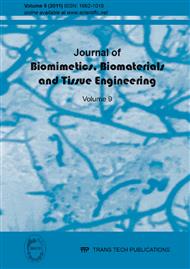p.1
p.17
p.25
p.37
p.47
p.57
p.69
p.81
p.93
Immunoextraction of CD25 Using Anti-CD25 Monoclonal Antibodies in Artificial Kidneys
Abstract:
The objectives of this study were to compare transport characteristics of the soluble interleukin-2 receptor (CD25) in haemodialyzers (high- and low flux) under equilibrium and sink conditions. Using an in vitro model high-flux polymethylmethacrylate (PMMA), high-flux cellulose acetate (CA), and low-flux polysulfone (PSF) dialyzer membranes were perfused with CD25 through the intracapillary space. Anti-CD25 antibodies added to the extracapillary space resulted in immunoextraction of CD25 after the system had reached steady-state. Results indicate that CD25 was efficiently cleared by both high-flux dialyzers but not the low-flux dialyzer. Furthermore, CD25 interaction with cellulose acetate membranes may promote formation of antigen-antibody lattice structures which disperse after antigen concentrations occur in excess. CD25 did not strongly adsorb to any of the membranes but its mass clearance was significantly enhanced by antibodies in the dialysate compartment. These studies demonstrated the utility of in vitro experiments to elucidate midsize molecule clearance during dialysis therapy.
Info:
Periodical:
Pages:
93-99
Citation:
Online since:
January 2011
Authors:
Price:
Сopyright:
© 2011 Trans Tech Publications Ltd. All Rights Reserved
Share:
Citation:


